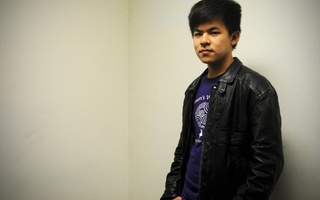The Harvard College Queer Students and Allies and the Transgender Task Force have long struggled to clarify their respective roles in the Harvard queer community, but in the last few months, the two student groups have attempted to improve communication in an effort to create a more unified queer community at Harvard.
In 2008, TTF was designated as an autonomous subcommittee of QSA, but only this year have the two organizations clarified certain responsibilities and integrated others, according to leaders of the groups.
“We set new expectations and clarified how leaders of each organization relate to the other,” said Eva B. Rosenberg ’10, chair of the Task Force. “QSA made a stronger commitment to be aware of and participate in TTF activities.”
According to the new stipulations, the TTF chair will now attend alternate QSA meetings, TTF will consult with the QSA treasurer on financial decisions, and the two groups will co-sponsor at least one event per semester.
The recent efforts to enhance collaboration comes on the heels of recent changes in leadership, according to Jia Hui Lee ’12, political chair of QSA and a member of TTF.
In the past, each organization largely focused on its own endeavors, but the new leadership has called for greater inclusion and unity between the groups, he said.
“We wanted a mutually beneficial relationship,” said QSA Treasurer Antonio Iglesias III ’10. “QSA wants to reach every single person who falls under the queer umbrella, and we’ve developed this relationship so we can cater to different members of the community.”
Historically, QSA and TTF have had different organizational goals—TTF focuses on raising awareness of trans issues on campus, while QSA seeks to provide a social space for the queer community and engages in activism and other campus-wide activities, according to Lee.
“It hasn’t always been the most friendly, collaborative relationship,” said Marco Chan ’11, co-chair of QSA. “Working more closely and supporting each other goes to show that rather than harboring any divisions, we’re in this together.”
Chan said he hopes that the heightened collaboration will send a strong message that despite the varying organizational goals between the two groups, they can both raise awareness and support for the queer community in their respective ways.
“Although the goals may be separate—one being more political and one being more social—it’s unifying because we are making sure that the identity of being queer isn’t fixed,” Lee said. “There’s a lot of room for people to fit in anywhere they want to.”
The collaboration, after all, seeks to unite students in spite of their differences, Chan said.
“We’re doing all we can to make sure there’s a community for anyone who cares to be a part of it—whether not out, coming out, or walking down the street draped in a giant rainbow flag,” Chan said.
Read more in News
Nabel To Lead Two Boston HospitalsRecommended Articles
-
Activists Say Military's Policy Remains BiasedThe Harvard Trans Task Force (TTF) is circulating an online petition protesting the possible return of the Reserve Officers’ Training Corps before the military allows trans-identified and intersex individuals to openly serve in the military.
-
 Tolerance at Harvard: Students Lag Behind Administration
Tolerance at Harvard: Students Lag Behind Administration













